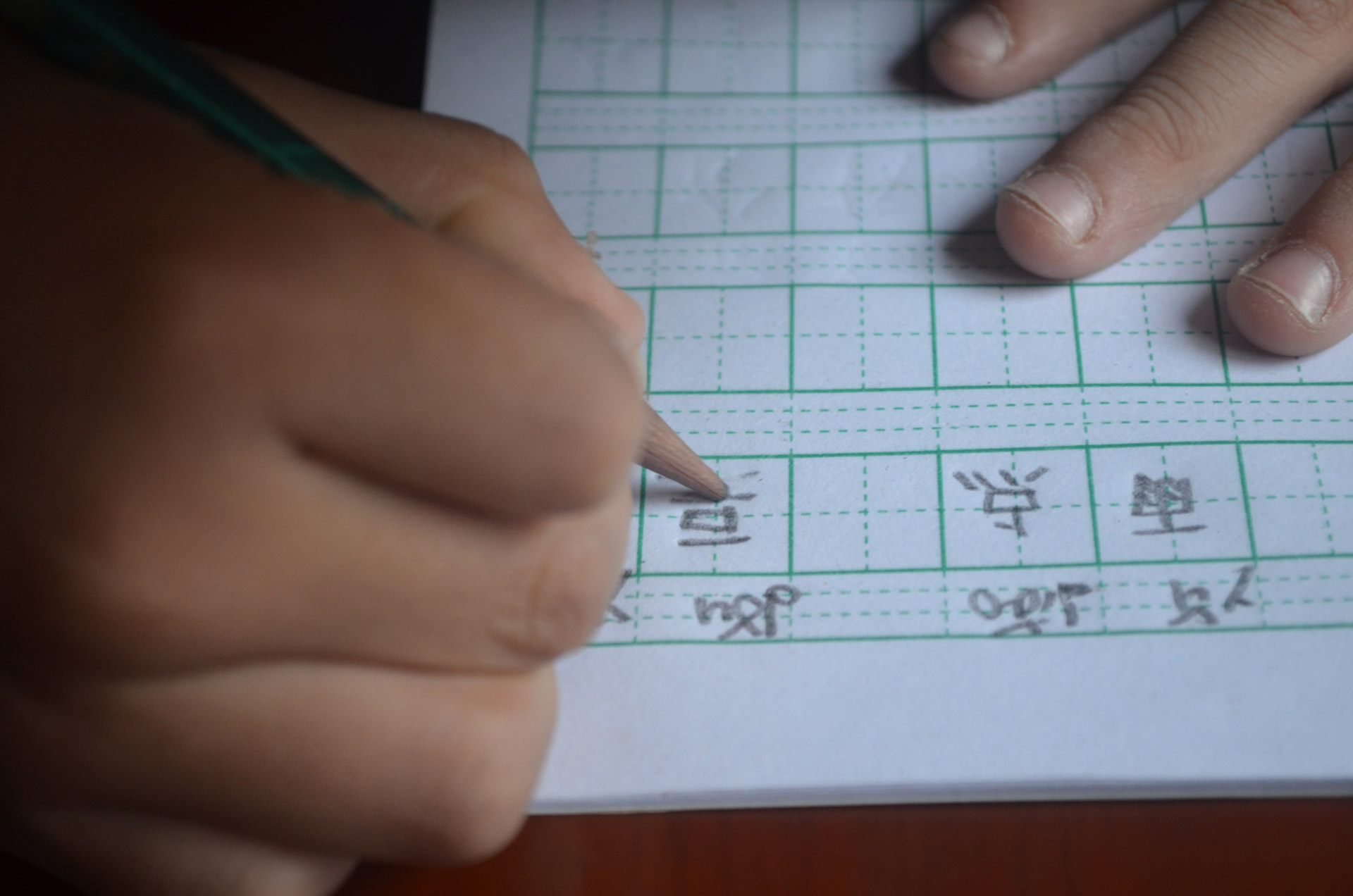In many countries, left-handed people are at least acknowledged, if not equally considered in everyday design. In some places, though, official data seems to reflect an unlikely reality. For instance, when a country reports left-handers as representing just a few percent of the population, something is clearly amiss, since globally around 10% of people are lefties — that’s well over a half-billion humans worldwide.

In some cases, this disconnect is arguably in part a product of practices specific to a country, like writing Chinese characters, which is more difficult to do with one’s left hand. There is also a strong element of stigma, though, that goes beyond things like writing conventions.

A 99pi fan recently recounted their childhood experience on Reddit, writing: “When I was a left-handed kid in third grade, I had an art teacher … a very traditional old-world woman, who berated me for holding the scissors in my left hand. She was Italian-American, and in Italian, ‘sinistro’ means left-handed. It also, of course, means sinister,” wrote user BarnabyWoods.
Barnaby’s observations also extended beyond the United States: “In many countries, the left hand is the ‘dirty’ one.” This can cause cultural friction when it comes to eating meals, for instance, in some places.
 As Rose Eveleth explains in a brief piece titled Two-Thirds of the World Still Hates Lefties: “Even the word left comes from ‘lyft’ which meant broken. The German words ‘linkisch’ also means awkward. The Russian word ‘levja’ is associated with being untrustworthy. Synonyms for left in Mandarin are things like weird, incorrect and wrong.” Meanwhile, “right” has mostly positive associations (e.g. “correct”). The history here is long, and not just linguistic — in the Middle Ages, witchcraft was sometimes associated with left-handedness as well.
As Rose Eveleth explains in a brief piece titled Two-Thirds of the World Still Hates Lefties: “Even the word left comes from ‘lyft’ which meant broken. The German words ‘linkisch’ also means awkward. The Russian word ‘levja’ is associated with being untrustworthy. Synonyms for left in Mandarin are things like weird, incorrect and wrong.” Meanwhile, “right” has mostly positive associations (e.g. “correct”). The history here is long, and not just linguistic — in the Middle Ages, witchcraft was sometimes associated with left-handedness as well.

Stigma aside, it has long been the case that there are myriad everyday things implicitly designed for right-handed people. Scissors are one of the classic examples (though many companies now manufacture ones specifically for left-handed people). There are also omnidirectional pens oriented toward lefties because ballpoints, for instance, don’t work when pressed into the page from left to right. There are also issues with most cameras and notebooks as well as computers, mice, and mobile phones (even within devices: many programs and apps).
Then there are designs out in public that have to be shared, like vending machines that generally feature coin slots and buttons on the right. One could argue some of these are matters of convenience, but others are matters of life or death: like left-handers sent off to war with right-handed guns, not to mention power tools and other potentially dangerous machines designed primarily for right-handed use.

While much of the world has at least accepted left-handedness in modern times, there were long periods in many countries in which left-handed children would have their tied hands behind backs in to “retrain” them. Intentions were good, in theory — kids were supposed to be prepared for a right-handed world, or so went the thinking. Paul Broca’s breakthroughs regarding the lateralization of the brain in the 1800s were a first step in recognizing the scientific reality of left-handedness, but research was slow to expand well into the 1900s.

Science and sensibilities have evolved since then, but economics played a part, too: smart business owners realized that designing objects for underserved populations could be profitable. Left-handed people are also over-represented in some professions, including certain sports (for various reasons that vary by sport). So on some levels and in some places, progress has been made. Nonetheless, there are still many opportunities to create more neutral or flexible designs with respect to handedness, and much destigmatization to be done around the globe.



Comments (11)
Share
One of my most joyous recent experiences was a new sketching app on my iPad. The moment I drew my first line, it said “I think you’re left handed – shall I switch all the controls?” No idea how it did it, but it was fantastic.
Scissors are a great place to discuss design not only because of “handedness” in general, but because of the truly “99pi” part of it – few righties realize that *which side* each of the blades are on is what matters. (It’s not just the “grips”!)
Scissors are designed such that the pinching action to close them also slightly forces the blades closer together to give a good clean cut. When a Lefty uses right-handed scissors, the blades spread APART, resulting in crappy cutting.
Thanks for clarifying! I’m a righty and never understood the need for left-handed scissors.
My dad, a lefty, used to buy the newspaper from a vending machine. The door opened from the right side. He got tired of the machine “pinching him when he gently closed it. So he just let it slam shut.
The iPad was watching the direction of your strokes, or perhaps the angle of the pen.
I was born left-handed and shattered my left wrist in the 2nd grade (it’s a long story involving a schoolyard swing-set, a dare, physics, and no common sense). I was in a cast for the rest of the school year, all summer, and into the next school year. I learned to write, eat, and do everything else with my right hand, even losing my instinct to pick things up with my left hand. My left-handed mother was quite disappointed as I was her only left-handed child.
As I grew up, quite a bit of natural left-handedness returned, and now I am almost fully ambidextrous. I eat, reach for things, brush my teeth, shave, put in my contacts, use my phone and other touch screens, and use hand and power tools with both hands, sometimes intentionally and sometimes without thinking.
I can’t write as easily or as quickly left-handed as I do right-handed, but my right-handed penmanship is atrocious and my left-handed penmanship is much more neat and clean, just slower. I have no left-handed signature, but I’ve always wondered if I could develop one, if I tried.
Can I just provide a small correction? Italian for left-handed is not ‘sinestro’ but “sinistro”. I am a native speaker and ‘sinestro’ has no recognizable meaning for me, not even if I think of dialectical variations.
My left-handed father, who went to school in Italy in the 1950s, was forced to learn how to write with his right hand, his left hand bound to back so he could not use it. That childhood effort – which he found very stressful and painful, as the neurons are forced to re-wire unnaturaly – caused him to develop a stutter which remains with him to date.
Today, he has two separate handwritings depending on which hand he uses, and he has a natural preference to use some tools with one hand and some others with the other.
Italy no longer perceives left-handed people in a negative light and this approach indeed it was outdated even in the 1950s, but it was still present in those years, especially in rural, less developed locations.
Thank you for the story and the correction – I updated the article!
I’m left handed, and am unable to use left handed scissors because I’ve used right handed ones my whole life. Also, I had a boss who was left handed and switched her computer mouse so that the right and left buttons were the reverse of the “normal” way, and she used it on the left side of her keyboard. She frequently asked me to help her with computer issues, which required me to sit at her desk and use her mouse. I absolutely could not do it, being so used to the right handed way.
In Ireland a left handed person was called a “citeog” (pronounced kitt-oge). It wasn’t a term of endearment by any stretch but rather a nasty stigmatised title. They were believed to have been “touched by the devil”. Most schools in Ireland used to be run by religious organisations, citeogs would be beaten and forced to write right handed, often including tying their left hand behind their back. One of my brothers was born in 1962, this happened to him in school and he grew up to have dreadful handwriting. I’ve no doubt this must have damaged these people, both the stigma and forcing them to write against their nature.
I’m a lefty – I love this article! I was once gifted an expensive left handed pair of scissors – the kind with the blades reversed. These were fabric/sewing scissors and after having used the “regular” scissors with a molded handle for lefties, I couldn’t use them – they were very frustrating, and languished away in my sewing room. Now I used a pair with spring opening and a large handle made to accomodate ones whole hand – regardless of which side it is.
I also hear Mary Sue above, with the left and right handed mice. At my work, I have my desk set up to be left handed, and when I switched the button on a laptop, it caused great trauma for my right handed co-worker, who just knew she had somehow destroyed this new laptop (and had never considered the idea that computers can be right or left handed). I’m the only lefty in my family (my family of origin and my own) and I’ve resigned myself to right handed computing, except at my desk at work. I can make the switch seamlessly at this point.
I never thought of vending machines being built to accommodate right handedness. I wonder how many things out there are that way, and I’ve never noticed, because it’s a right handed world and we had to adapt.
As handwriting becomes less necessary, I love it when people who have known me a while see me write something and exclaim “You’re left handed!” Me: “Yup, been that way all my life.”